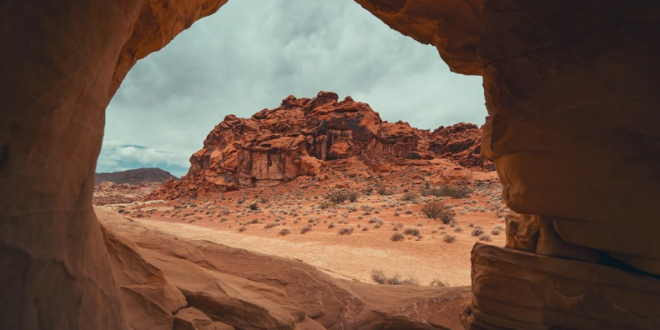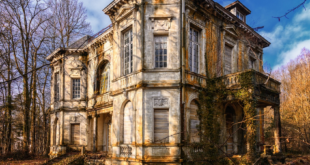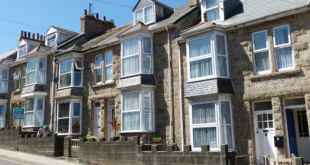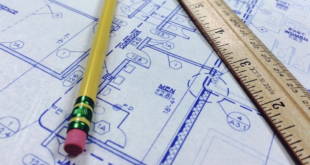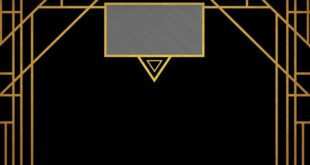The concept of “home” has evolved dramatically over the centuries, reflecting changes in human society, technology, and culture. What began as simple shelters to protect against the elements has transformed into complex, interconnected spaces that cater to modern lifestyles. The story of the home is not just about architectural design, but also about how our living environments have adapted to meet our needs as individuals, families, and communities. Here’s a journey through the fascinating evolution of people’s homes, from ancient times to today.
1. Prehistoric Homes: The Dawn of Shelter
In prehistoric times, homes were simple and functional, providing basic shelter from weather, predators, and other dangers. Early humans lived in caves or temporary structures made from natural materials like wood, leaves, animal hides, and stone. These early homes were often communal, as groups of hunter-gatherers shared spaces for warmth and safety.
One of the most significant advancements in prehistoric housing came with the discovery of fire. This allowed humans to stay warm, cook food, and gather for social interaction within their shelters. The earliest “homes” were more about survival than comfort, but they marked the beginning of a long journey toward more permanent, personalized dwellings.
2. Neolithic Revolution: The Birth of Permanent Settlements
Around 10,000 BCE, the Neolithic Revolution brought about a monumental change in human history: the shift from nomadic lifestyles to agriculture. This shift gave rise to the first permanent settlements and, with them, the evolution of more structured homes. Villages and small communities were formed as people began cultivating crops and domesticating animals, reducing their need to move frequently.
Homes during this period were built from locally available materials, such as mud bricks, stone, or timber. Early houses were typically small, rectangular or round, with one or two rooms. These homes often had thatched roofs and hearths for cooking and warmth. The development of farming also meant that homes were often located near fields, marking the beginning of the relationship between humans and the land that still influences housing today.
3. Ancient Civilizations: Complexity and Comfort
As civilizations developed in Mesopotamia, Egypt, Greece, and Rome, so too did housing designs. In Mesopotamia, homes were made from mud bricks and often had flat roofs. In ancient Egypt, wealthier citizens lived in spacious, stone-built homes with multiple rooms, courtyards, and even gardens. For the first time, homes were seen not just as places of shelter, but as spaces for comfort, status, and even luxury.
The Romans took domestic architecture to new heights, particularly with the development of the domus—a house designed around a central courtyard with private rooms surrounding it. Roman homes often included amenities such as underfloor heating (hypocausts), indoor plumbing, and elaborate decorations, reflecting the owners’ social status. Public baths and communal spaces also played a significant role in urban living, further expanding the concept of the home as both private and social.
4. Medieval Period: Fortification and Functionality
During the medieval period (5th to 15th century), European homes reflected the socio-political environment of the time. Feudalism and frequent conflicts led to the construction of fortified homes, particularly for the nobility. Castles and manor houses, built from stone, featured thick walls, towers, and moats for defense, with large halls for communal living and feasts.
For commoners, homes were much simpler, typically made from timber, wattle, and daub. These homes were often single-room structures where families lived, cooked, and slept together. The hearth remained the central feature, providing both heat and a place for food preparation. Rural peasants often shared space with livestock, highlighting the utilitarian nature of homes during this era.
In urban areas, the growth of towns and cities led to the rise of multistory homes, often crowded together along narrow streets. As trade and craftsmanship became more important, homes began to feature workshops and storefronts, blending living and working spaces.
5. Renaissance to Industrial Revolution: Artistic Expression and Urbanization
The Renaissance (14th to 17th century) ushered in a period of architectural innovation and artistic expression in home design. Wealthy families, particularly in Italy, commissioned grand homes and palaces that showcased classical design principles, symmetry, and proportion. Villas and townhouses with expansive gardens became popular among the elite, emphasizing beauty and leisure as much as functionality.
The Industrial Revolution (18th to 19th century) brought about a dramatic transformation in housing, particularly with the rise of urbanization. As factories and industries grew, workers migrated to cities, leading to the rapid construction of homes. Unfortunately, this also resulted in overcrowded slums with poor living conditions for the working class. Terraced houses and tenements became common, often lacking sanitation and privacy.
At the same time, the middle and upper classes built suburban homes, characterized by spacious layouts and modern conveniences such as gas lighting, indoor plumbing, and heating. The Victorian era saw the popularization of the townhouse, a symbol of status, and mass-produced materials made home construction more affordable.
6. 20th Century: Modernism and the Rise of the Suburbs
The 20th century brought significant changes in home design, influenced by advances in technology, the rise of the automobile, and evolving social dynamics. The aftermath of World War II, particularly in the West, saw a boom in suburban development. Suburbs offered affordable housing for growing families, and the concept of the “nuclear family” home became central to the idea of post-war prosperity.
Modernist architecture, pioneered by figures like Le Corbusier and Frank Lloyd Wright, emphasized simplicity, function, and the use of new materials like steel, glass, and concrete. Open-plan living spaces, flat roofs, and large windows defined this era of home design, moving away from the ornate detailing of the Victorian and Edwardian periods.
The rise of appliances—such as refrigerators, washing machines, and central heating—transformed daily life, making homes more comfortable and efficient. Meanwhile, housing developments became more standardized, as mass production methods made it possible to build homes quickly and cheaply.
7. 21st Century: The Smart Home Revolution
Today, the evolution of homes is defined by technology and sustainability. Smart homes are equipped with interconnected devices that allow homeowners to control lighting, heating, security, and entertainment systems with a smartphone or voice command. These innovations have redefined comfort and convenience, making homes more adaptive to the needs of modern life.
Sustainability is also a major trend in contemporary home design, with an emphasis on energy efficiency, renewable energy sources (such as solar panels), and environmentally friendly building materials. Tiny homes and minimalist living have gained popularity as people seek to reduce their environmental footprint and embrace simpler lifestyles.
Moreover, the COVID-19 pandemic of 2020 has had a profound impact on how we view our homes. With the rise of remote work and home schooling, homes have evolved into multifunctional spaces that serve as offices, classrooms, and even gyms, prompting a renewed focus on flexible, adaptable designs.
From primitive shelters to smart homes, the evolution of people’s homes is a reflection of humanity’s journey through history. As societies have grown more complex, so too have the homes we live in, adapting to our changing needs, technologies, and ways of life. Today’s homes are a blend of form and function, privacy and community, with the future promising even more innovations that will continue to shape the spaces we call home.
 Homeowners Club If you are one of the 15 million homeowners in the UK, the free to join online Homeowners Club is for you.
Homeowners Club If you are one of the 15 million homeowners in the UK, the free to join online Homeowners Club is for you.
